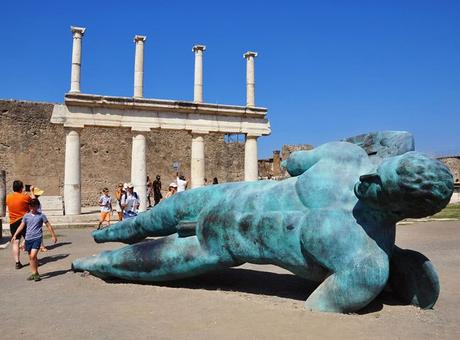
In 79AD Pliny the Younger narrates the eruption of Vesuvius from across the Bay of Naples, along with the destruction that followed in Pompeii and surrounding cities. Pompeii was abandoned under layers of molten hot ash and activity ceased there until millennia’s later. Ironically the destruction caused by the stratovolcano also resulted in the preservation of the metropolis for thousands of years to come. At the expense of a terrifying explosion that destroyed a city, Pompeii was now frozen in time waiting to be re-discovered. In 1783, excavations begun that unearthed the time capsule of Rome, and archaeologists today are still itching to explore. So why does the allure of Pompeii still live on today?
A deeper understanding of Ancient Roman daily life
Pompeii remains as significant today as it was when excavations first begun because it holds an amazing truth. Texts found from the time of Ancient Rome only did so much in providing historians of today an intimate look into the lives of Romans. In fact, what we know of their lifestyles is only ambiguous accounts of notable events that happened at the time, for example the coverage of the opening of the Colosseum. Pompeii allows academics and explorers a firsthand look into the lives of ordinary citizens. It tells us a lot about what Pompeiians thought to be important, what their daily rituals were and the type of lives they lived.
The importance of its destruction and today’s preservation
The damage at Pompeii is critical today as it provides us with two things. The importance of understanding destruction and preservation. The destruction told us what a Vesuvian eruption looks like in terms of what would need to be done today to protect the people who live near the volcano in the event of another eruption. In simpler terms, we know what to expect and how to better build our infrastructure to withstand these types of eruptions. Preservation wise, Pompeii is the world’s most excavated archaeological site which means that there are hundreds of artefacts and buildings that now must be conserved.
The future of Pompeii
The legacy of Pompeii in the future is under the care of a team of archaeologists that are now tasked with conserving what past excavations have uncovered. Less digging is done now, with the main focus being digitally scanning what is above the ground for record keeping. Medical scans of the skeletons found within the casts are being conducted to get a sense of exactly who were the unlucky residents that remained in Pompeii.
A previously ignored section of Pompeii, a neighbourhood called Porta Stabia is now being excavated by archaeologists to discover how the vast majority of middle-class citizens lived. It is an area that was forgotten due to the fact that it wasn’t as wealthy of an area like the ones that we know produced illustrious villas. Instead, it is how around 98% of common residents lived, in humble homes and small workshops. The site of Pompeii is one of the most important examples of Ancient civilisations in the world and that we get to explore the untouched city is why it will continue to be the most visited historical excavation sites in the world.
Advertisements
